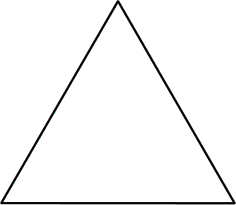18 JUL 2013 by ideonexus
 Sexual Selection in the Wodaabe Tribe
Sexual Selection in the Wodaabe Tribe
Perhaps human aesthetics emerged through runaway sexual selection, with aesthetic tastes evolving as part of female mate choice. In this view, some female hominids just happened to have certain tastes concerning male ornaments. The artists best able to fulfill these tastes inseminated more aesthetic groupies and sired more offspring, who inherited both their artistic talent and their mothers' aesthetic tastes.
Something like this still happens among the Wodaabe people
(also known as the Boro...As a result of their mating rituals, the men have diverged phenotypically from those of neighboring tribes.
18 JUL 2013 by ideonexus
 The Connection Between Art and Sex
The Connection Between Art and Sex
How the pleasure in some stately piece of beautifully pro- portioned architecture, the thrill produced by solemn music, or the calm sweetness of a summer landscape in the evening, is to be attributed to the feeling of sex only, it is hard to see; they have in common a pleasurable emotion, and that is all. That a very large part of art is directly inspired by erotic motives is perfectly true, and that various forms of art play an important part in love songs and courtship is obvious; but this ...Both instill pleasurable emotions, but is one a strategy to get the other or are they naturally connected via the similar emotions they generate?
26 MAR 2013 by ideonexus
 Mathematics is More Popular Than Music and Art
Mathematics is More Popular Than Music and Art
Archimedes will be remembered when Aeschylus is forgotten, because
languages die and mathematical ideas do not. 'Immortality' may be a silly
word, but probably a mathematician has the best chance of whatever it may
mean."
[* * *]
A mathematician, like a painter or a poet, is a maker of patterns.
If his patterns are more permanent than theirs, it is because they are
made with ideas.
[* * *]
The mathematician's patterns, like the painter's or the poet's,
must be b...Mathematical ideas are more permanent in culture than artistic ones, and more people play in mathematical games without realizing it.
01 OCT 2011 by TGAW
 Colin Tudge Describes Knowledge Increasing Wonder and Beauty
Colin Tudge Describes Knowledge Increasing Wonder and Beauty
Science is an aesthetic and spiritual pursuit. The more that is revealed, the more wondrous nature becomes. The more we know about living creatures, the more deeply we can engage with them. That is the appetite, as Hamlet said, that grows from what it feeds on.Folksonomies: ionianenchantment science nature
Folksonomies: ionianenchantment science nature
10 JUN 2011 by ideonexus
 A Response to Leopold's Description
A Response to Leopold's Description
The passage shows how different aspects of
virtue connect. Patience is part intellectual virtue, part
moral virtue and part physical virtue, as it is portrayed
here. The humility which allows Leopold to lie down
in the muck unselfconsciously is a moral virtue, but
humble recognition of our own ignorance is also a key
intellectual virtue, as Socrates so often reminds us
(see also William Beebe’s description of the ideal
naturalist quoted earlier). Humility also makes
possible Leopold’s aes...Cafaro sees a great deal of virtue in a naturalist's description of getting muddy to witness nature and appreciate it.




